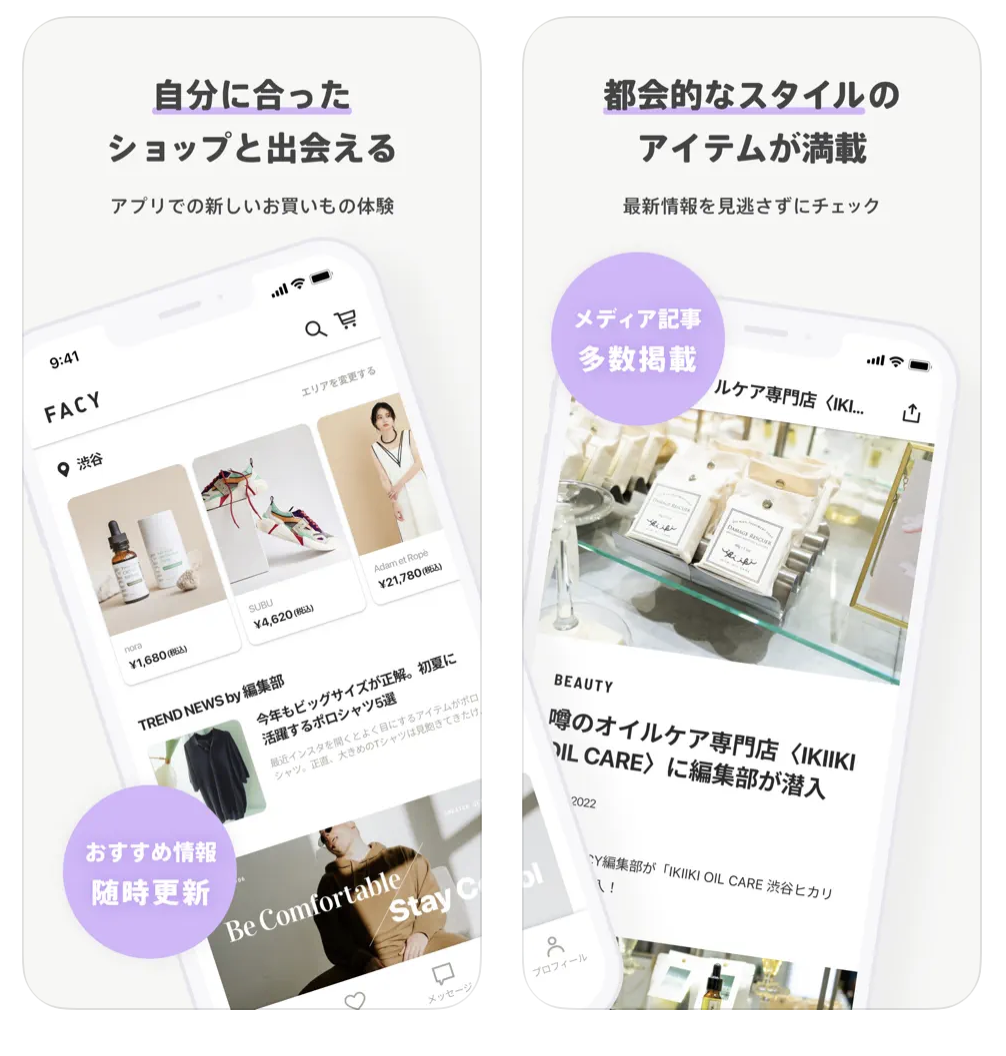Paid work
clients & products
Most recent / current

FACY (Styler Inc)
Tokyo, Shibuya, Japan, 2019-2022
FACY aims to bring physical shops together with an ever more online audience of customers.
The business is in new retail and the app is a so-called OMO (offline merges online) applications that hopes to bridge the digital gap that has widened between traditional clothing and cosmetic stores in Japan.
The high street rents are continuously increasing and customers have come to expect brands to be online. At the same time, the shopping experience for clothes in particular, does not lend itself well for online shopping.
When buying clothes that are not fast fashion, you want to feel the quality of the brand and test the fit before buying. FACY brings the traditional retail inventory online and enables an omni-channel experience where digital and physical blends together.
Throughout my time in Styler Inc, the company behind FACY, I have worked in engineer and later as Chief Product Officer managing the development and design teams.
Collaborating in Japanese and English to bring business and development together as well as to understand and serve a market previously completely unknown to me has been a huge undertaking. I’ve been lucky to get to learn how to build and manage both an international team and a new type of product.
Our stack has involved working on AWS and GCP. Moving from Ruby to Python and from EC2 to Kubernetes to Serverless. Having to ingest, index and serve hundred of thousands of items from hundreds of shops we have had incredibly interesting challenges solved both by development inside FACY and relying on well established systems such as Firebase, BigQuery and Stripe.
Video Hearings, Ministry of Justice
London, UK, since 2018-2019
The Reform Programme is a huge undertaking of the UK government to bring the justice system up to speed with todays technology.
Rakuten Delivery
Osaka, Japan, 2016-2018
Rakuten Delivery is the OnlinePizza or UberEats (or simply the 2nd biggest competitor to Demae-Can) of Japan.
Before then
Years ago
Porting Ruby on Rails to C#
Writing proprietary C# MVC and ORM frameworks
Silverlight and WPF desktop application development
E-commerce platform in PHP
Years ago
Document CMS
Designed and implemented a document management system for the Swedish Transport Agency. Using WPF, WCF and Visual Studio
Batch processing
Work to maintain and improve the batch processing and related functions for the case management system of driver licenses in the Swedish Transport Agency
Years ago
Test automation
useMango, a rich desktop client using WPF, Selenium and HP UFT for test automation and execution
Framework development
Built proprietory frameworks for test automation in Ruby and VBA
Node.js server side
Using AWS and

